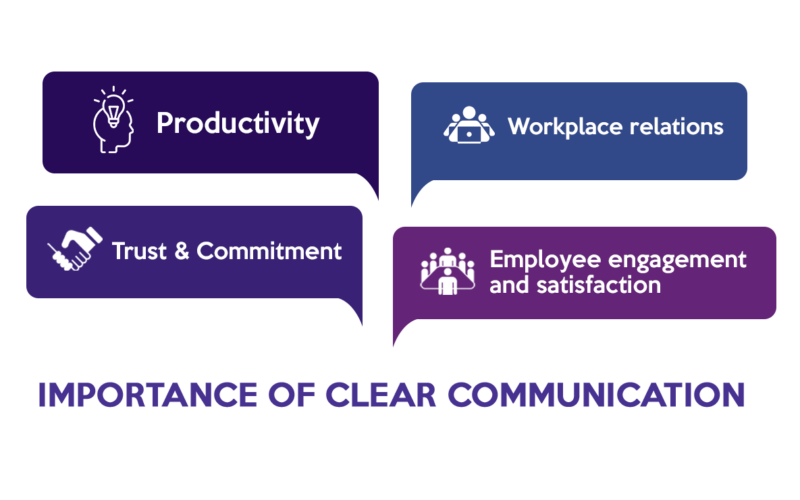Outsourcing involves a company hiring or subcontracting another specialized company to conduct specific tasks at scale. This includes IT outsourcing, which involves the day-to-day management and operation of IT assets and processes, and business process outsourcing (BPO), which involves the ownership, administration, and management of selected business processes (e.g., human resources, finance and accounting).
Outsourcing has developed into a successful and widespread business strategy over the last few decades, serving as a key to creating a sustained competitive edge by reducing costs, enabling innovation, and saving time.
This article will delve into the benefits of outsourcing overseas, essential steps to outsource, factors to consider, potential challenges of outsourcing overseas, and how to overcome these.
Benefits of Outsourcing Overseas
Cost Savings
In a survey of 200 global companies with large IT and business process outsourcing footprints, the Boston Consulting Group (BCG) found that 79% of companies have asked service providers for help in some form, such as longer payment terms (47%), price reductions (45%), or free support for more processes or additional services (41%).
Traditionally, companies have adopted the practice of outsourcing to achieve cost reduction through labor arbitrage. This remains the ultimate motivation of many companies to outsource overseas.
Improved Customer Satisfaction

Customer satisfaction is crucial to every successful business, directly affecting the company’s growth and reputation. Customers who are satisfied with the product or service are likelier to buy again, recommend the brand to others, and contribute to increased sales and revenue. A Zendesk survey found that 57% of consumers say excellent customer service is a factor in their brand loyalty.
Companies can access specialized talents by leveraging a global talent pool, improving service quality, and spurring product innovation. Additionally, time zone differences enable round-the-clock customer support, ensuring prompt responses and problem resolution, which consumers value.
Access to a Larger Pool of Talent
Different countries have unique educational systems and training programs, resulting in a diversified pool of professionals with diverse skill sets and expertise. Businesses can tap into this diversity and gain access to specialized talents that may not be easily available in their local talent pool. Some countries are well-known for their proficiency in a particular industry or technology. By outsourcing to these regions, businesses can use this specialized expertise and benefit from cutting-edge practices and innovations.
Exposure to different perspectives and approaches promotes innovation within the organization. Collaborating with professionals from various cultural and educational backgrounds can result in new ideas and creative problem-solving.
Improved Efficiency
Companies can streamline operations and focus on core capabilities by delegating certain tasks and processes to offshore partners, which boosts productivity. Access to skilled labor at a cheaper cost can result in significant savings, allowing companies to allocate resources more efficiently. Furthermore, time zone differences enable 24/7 operations, continuous workflow and faster project completion.
Steps for Outsourcing Overseas Effectively
Define your business needs
Defining your business needs allows you to set clear objectives and goals for outsourcing. This clarity ensures that the outsourcing arrangement is consistent with the business plan and supports the long-term vision. It helps avoid unnecessary expenses and only focus on outsourcing tasks that require external support. This approach maximizes cost-effectiveness and guarantees you the best value for your money.
Moreover, defining your business requirements helps you to choose the most suitable outsourcing services and providers. By doing this, you can ensure that you choose service providers that have the necessary skills and knowledge to meet your business goals effectively.
Research outsourcing options
Researching outsourcing options requires a systematic strategy to identify the best-suited service provider for your business needs. Begin by properly analyzing your specific outsourcing needs and goals. Following this, conduct market research to discover potential outsourcing locations known for their expertise in your required services.
To learn about credible outsourcing providers, seek recommendations and referrals from industry peers or professional networks. Based on your criteria, shortlist promising candidates and review their portfolios to evaluate their competencies and industry experience.
Researching your outsourcing options allows you to understand the strengths and capabilities of potential overseas vendors, ensuring a reliable and efficient partnership. By examining various outsourcing destinations, you can find the best combination of expertise, cost-effectiveness, and cultural compatibility.
Develop a clear communication plan

A clear communication plan is essential for smooth collaboration and successful project execution when outsourcing overseas. To begin, establish a single point of contact for both your company and the outsourcing partner to facilitate communication and streamline information flow. Specify the communication channels to be used, such as email, messaging platforms, or video conferencing. Set the frequency of communication, like regular meetings or status updates, to keep all stakeholders updated on project progress. To effectively manage expectations, establish a shared understanding of communication protocols, response times, and time zone differences.
A well-crafted communication strategy ensures effective collaboration, reduces misunderstandings, and strengthens the relationship between your organization and your outsourcing partner.
Implement and monitor the outsourcing process
Develop a detailed implementation strategy outlining roles, responsibilities, and timelines for your company and the outsourcing partner. Communicate the project’s objectives, deliverables, and performance expectations. Review the performance and progress against key performance indicators (KPIs) regularly to check the outsourcing partner’s efficiency and quality of work. Regularly evaluate risks and implement risk mitigation strategies to safeguard the project’s success.
Constantly monitoring the outsourcing process enables businesses to make real-time adjustments, ensure adherence to project deadlines, and maintain the highest quality standards, resulting in a successful outsourcing relationship and project outcomes.
Factors to Consider When Outsourcing Overseas
Quality of Services
The quality of services directly impacts customer satisfaction. If the outsourced work does not reach high standards, it might lead to unsatisfied customers and damage the brand’s reputation. A company’s ability to consistently provide high-quality services distinguishes itself from its competitors. Superior quality can be a differentiating factor that attracts and retains customers in a competitive market.
Availability and Accessibility
Having an accessible outsourcing team ensures real-time contact, allowing for quick responses to inquiries and efficient problem-solving. Timely availability enables smooth communication between the internal and remote teams, improving project workflow and productivity.
Cost
While cost savings can be a compelling reason to outsource overseas, it is critical to assess the whole cost of outsourcing, which includes communication, travel, and management expenses. Ensure that the outsourcing arrangement is still cost-effective and fits within your budget.
Cultural Compatibility
Communication, work practices, and decision-making can all be influenced by cultural differences. Integrating a foreign outsourcing partner into the existing company culture can be complex due to differences in values, work ethics, and communication styles. Choose a country whose culture matches your company’s values to build a healthy working relationship.
Security and Data Protection
Data security is crucial when outsourcing, especially if sensitive information is involved. Assess the security procedures and protocols offshore vendors use to safeguard your data.
Tips for Successful Outsourcing Overseas
Foster open and clear communication
Developing trust and transparency between the in-house staff and the offshore partner is essential. Choose appropriate communication solutions that enable real-time interactions, such as video conferencing and instant messaging platforms. Next, create well-defined communication protocols that include preferred channels, response times, and availability to ensure consistency and minimize misunderstandings. Promote an open communication and active listening culture in which team members feel comfortable asking questions, seeking clarification, and sharing feedback. Outsourcing partners can develop strong working relationships, effectively collaborate, and achieve mutual success by valuing clear and open communication.
Maintain a consistent brand voice
It is essential to establish clear brand guidelines and ensure that the offshore team fully understands and aligns with them. Begin by providing detailed documentation that outlines your brand’s values, tone of voice, messaging style, and visual identity. Any updates or adjustments to the brand guidelines should be communicated regularly, and the offshore team should be aware of them. Conduct periodic training sessions to reinforce the brand’s essence and ensure that the outsourced team represents it in their work.
Use technology to your advantage
Invest in robust communication and collaboration platforms facilitating real-time interactions and seamless information sharing. Video conferencing, instant messaging services, and project management software provide efficient communication between the in-house team and the offshore partner, overcoming geographical barriers. Use automation and workflow management solutions to streamline processes, increase efficiency, and reduce errors. Furthermore, data analytics and reporting technologies provide valuable insights into project performance, enabling informed decision-making. By using technology effectively, outsourcing partners can increase productivity, maintain transparency, and establish a solid foundation for successful and mutually beneficial collaboration across borders.
Continuously evaluate and improve the outsourcing process
For an overseas outsourcing partnership to succeed, the outsourcing process must be regularly evaluated and modified. Regularly monitor key performance indicators (KPIs) to evaluate the outsourcing team’s performance, the project’s status, and adherence to deadlines. Gather feedback from both the internal team and the offshore partner to identify potential bottlenecks and areas for improvement. Use this input to make the necessary adjustments, streamline processes and optimize workflow efficiency. By regularly evaluating and optimizing the outsourcing process, businesses can adapt to changing needs, reduce risks, and ensure the long-term success of their outsourcing initiatives.
Potential Challenges of Outsourcing Overseas and How to Overcome Them
Outsourcing overseas has numerous advantages, but it also has some drawbacks. Here are some potential challenges of outsourcing overseas and strategies for dealing with them:
Language Barriers
When team members speak various languages, there is a greater chance of misinterpretation. This can lead to misconceptions, errors, and delays in project execution, affecting productivity and efficiency. Language is linked to culture, and certain phrases or expressions may have different meanings or connotations in different cultures. This might result in unintended offense, affecting team dynamics and collaboration.
One way to overcome language barriers when outsourcing overseas is to encourage team members to listen intently and seek clarification when necessary. Create an environment where it is acceptable to ask for explanations to ensure that messages are understood correctly. Promote a culture of open communication and transparency to encourage team members to express their concerns or difficulties related to language barriers.
Time Differences
When outsourcing work overseas, time differences might bring various challenges. Real-time communication might be challenging when there are major time zone differences. It could cause delayed email or message responses, slowing decision-making and project progress. Because of the limited overlap in working hours, there may be fewer opportunities for direct collaboration between the in-house team and the outsourced partner. This can hinder the flow of information and feedback.
Businesses can use the following strategies to solve these challenges:
Determine a similar time frame in which both teams can collaborate and communicate in real-time.
Assign tasks while considering time zone differences to prevent important activities from being postponed because of time constraints.
Encourage both teams to regularly provide updates on their progress to maintain continuous workflow despite time zone differences.
Set clear expectations for response times based on time zone differences. This helps in managing communication expectations and prevents unnecessary delays.
Maintaining Control Over the Customer Experience
Maintaining control over the customer experience can be a significant challenge for various reasons. Cultural differences, language barriers, and a lack of market knowledge can all lead to a misalignment in understanding and providing the expected customer experience.
Here are some key strategies to overcome this challenge:
- Provide extensive training to the offshore team, focusing on product knowledge, service standards, and market understanding.
- Establish guidelines for the offshore team to follow. Review performance against these standards regularly and communicate expectations.
- Conduct regular audits and surveys to evaluate the customer experience and find areas for improvement.
- Encourage cultural knowledge and sensitivity training. Understanding the cultural nuances and preferences of the target market is critical to providing a personalized customer experience.
Offshore outsourcing can be a strategic decision for businesses seeking cost savings, improved customer satisfaction, access to a larger talent pool, and improved efficiency. Whether a small project or a huge one, outsourcing overseas empowers companies to focus on their core competencies while leveraging external expertise to deliver high-quality results. It does, however, come with various considerations and challenges. To ensure a successful outsourcing experience, companies must carefully consider the service provider’s quality of services, availability, cost, cultural compatibility, and data protection measures. Businesses can overcome challenges and realize the full potential of outsourcing work in foreign countries by building a collaborative environment and investing in cultural awareness training, resulting in increased productivity and sustainable business growth both within their own country and beyond.



Leave A Comment
You must be logged in to post a comment.